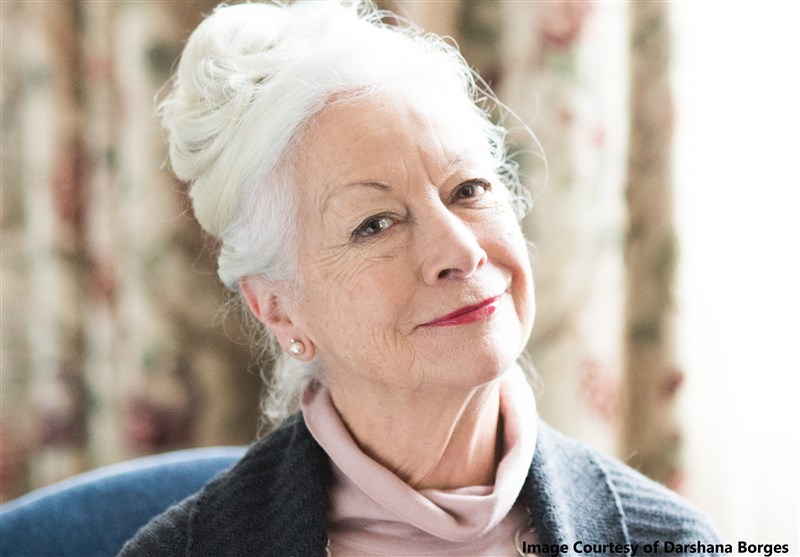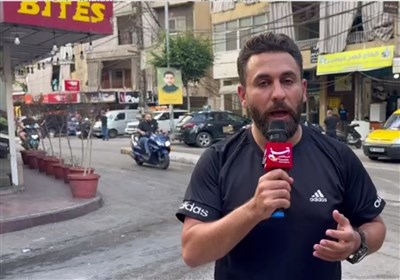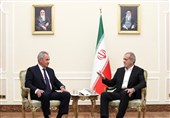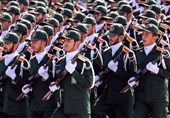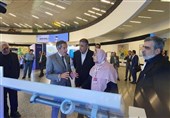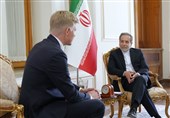Careful Examination of Root Causes of Terror: Peace Builder Scilla Elworthy
TEHRAN (Tasnim) – Prominent peace builder Scilla Elworthy attributed acts of terrorism in the present era to a range of factors including media glorification of perpetrators, exclusion of women from peace processes, and the ongoing exploitation of less powerful countries by the West and its allies.
In a written interview with Tasnim, Dr. Scilla Elworthy, a prominent peace activist, Nobel Peace Prize nominee, author, and founder of peace groups, elaborated on the causes of violence and terrorism in the contemporary world, the approaches to tackling conflicts, particularly in the Middle East, and the significant role that women can play in preventing and winding down the wars.
Dr. Elworthy founded the Oxford Research Group in 1982 to develop dialogue with nuclear weapons decision makers, and set up Peace Direct in 2002 to support local peace-builders in conflict areas. Three times nominated for the Nobel Peace Prize, awarded the Niwano Peace Prize in 2003, she advised Archbishop Desmond Tutu and Sir Richard Branson in setting up ‘The Elders’. She co-founded Rising Women Rising World in 2013. Her latest book is Pioneering the Possible: awakened leadership for a world that works and her TED talk on non-violence has been viewed by over 1,130,000 people.
The following is the full text of her interview with Tasnim:
Tasnim: Several nations in the Middle East are grappling with violence, conflicts, extremism and terrorist attacks. In the meantime, the continuation of financial, military and ideological support for the radical and terrorist groups has dimmed the prospect of sustainable peace, at least in the near future. What practical procedures do you perceive for establishing peace in such volatile region, considering your often-proclaimed view that using force against force does not work?
Dr. Elworthy: A sophisticated Iraqi woman analyst who worked in refugee camps inside Syria on the border with Turkey observed that the strength of the women she worked with was their ability to consider options, the fact that they were not so quick to join a ‘side’, and that their approach was not ‘win/lose’, but to solve the problem by offering more possibilities. Her opinion is that a consortium of wise women from the region could quickly work out a way forward for Syria. Whereas males tended to talk a great deal and write long analyses, the women got on with what needed doing, and sorted it.1
Women across the planet are alert to the challenges of radicalization, and profoundly disturbed by the poverty of western responses. A decade ago women made a careful analysis of the root causes of political violence, revealing the persistent influence of powerlessness, exclusion, trauma and humiliation. We proposed proven practical steps that could be taken in Iraq, Israel/Palestine and in our own towns and cities.2
Ten years later, in a much more serious situation, women are not simply arguing for a more sparing use of military force: they argue that any armed intervention should be both preceded by a much wider range of strategies designed to address both the causes and effects of violence. For example:
1. Cut supplies of weapons to the region. The international transfer of weapons to the Middle East has risen dramatically over the past five years, with Saudi Arabia’s imports for 2011-15 increasing by 275%.3
2. Stop arming a country with a shameful human rights record. Since the Yemen war started in 2015, the UK has made 10 times more in arms sales to Saudi Arabia – worth £3.3bn - than it has given in aid to Yemen. Similarly, the US sold a record amount of arms to Saudi Arabia under President Obama’s administration, with sales set to continue under President Trump.
3. Regulate arms transfers. There are more international laws regulating the trade of bananas than weapons. Legal loopholes in the laws governing the trade of weapons enable states and corporations to sell guns, bullets and teargas to dictators, who then use them to kill and injure civilians, or trade irresponsibly with sub-state groups.
4. Give women a voice in strategy. Between 1992 and 2011, 4 per cent of signatories to peace agreements and less than 10 per cent of negotiators at peace tables were women. When women are included in peace processes there is a 20 per cent increase in the probability of an agreement lasting at least 2 years, and a 35 per cent increase in the probability of an agreement lasting at least 15 years.4
Let’s say this straight. Those taking decisions on security and defence policy in the Middle East, including on counter-terrorism, have been male. They have not solved the problem, and in many cases have made it worse. It is time to give women not only a voice, but the decision-making power to build an effective strategy.
Tasnim: The armed militants in Syria are butchering civilians in the name of Islam. They show no mercy to Christians, Jews, Izadis, Shiites and even the Sunni Muslims, and behead people because they do what they just think is the best. Such cruel terrorists were once ordinary citizens living in peace. What do you think has made these once-normal people so merciless? What should the anger at such radical moves be targeted at? How can the nations fight off the root causes of this terrorizing group called Daesh (ISIL)?
Dr. Elworthy: When we investigate root causes of terror, it is a painful fact that ‘legitimate’ states enact much more violence worldwide – through military intervention, currency deals and resource extraction - than non-state terror groups do. The ongoing exploitation of less powerful countries by the West and its allies does not excuse terrorist action, but it does explain it.
The most effective approach governments could take to defuse international terrorism would be to immediately adopt genuinely fair and peaceful processes in their dealings with other peoples. This strategy would deprive terror groups of one of their most compelling justifications for violence.5
Addressing causes of such violence requires us to think of terrorists as people. It encourages us to understand that their actions – however hateful – come from a place of grievance, humiliation and isolation, as Philip McKibbin says. It asks us to believe that their pain, and the pain that so many other people are feeling in this time of terror, is not insurmountable. That collectively, we are able to overcome it.
Asphyxiate Violence. Nothing should be done which supports the image of the terrorist as a heroic warrior defending the interests of the people. Incidents like Abu Ghraib, the killing of innocent civilians in Fallujah, tank shells fired into the Gaza strip and the vast personal coverage of the Paris bombers, all made it easier for militants to claim convincingly that their campaign of violence, repugnant to so many outsiders, is not only legitimate amongst Muslims, but noble.
When western media consistently feature terrorists on their front pages, giving them quasi-populist names like ‘Jihadi John’, they can see themselves as global celebrities. Other young men then naturally crave such oxygen of publicity, even if it costs them their lives. Western leaders need to orchestrate a cohesive and co-ordinated programme to educate media editors why featuring portraits and biographies of suicide bombers simply gives airspace to Jihad. The opposite – denying airspace – would work far better to minimise the glamour of brutality.
Support civil society. Over the past decade Peace Direct has shown that local people often know the best ways to prevent conflict, thus breaking recurrent cycles of violence and making peace last. For example, helping people at risk of disaffection to feel part of their communities, thereby turning away from extremism. While this might seem like a liberal platitude in the face of such a violent movement as ISIL, it is in reality hard, dangerous and dedicated work. And it can have remarkable results. In the award-winning counter-radicalisation project in Pakistan begun in 2014, 4,000 ‘at risk’ young people have been reached by 223 trained youth mediators, who discussed with them and their families why the Koran would not approve suicide bombing. More than 200 such bombings have been prevented.6
Peace Direct DEO Dylan Mathews reports: “What is needed is time, money and consistent engagement between those local people who are intimately aware of the problems in their communities and those at the margins of their communities who are at risk of turning radical. We need to find and support those who can reach out to such people in the margins before it is too late. Local peace-builders are the name we give to such people, and they need serious support.”7
A longer term plan would also make use of the diaspora of ‘failed states’. Many of those who have fled the chaos and terror of countries like Somalia, Eritrea, Sudan and Yemen have substantial skills that could contribute to the re-building of their nations. These individuals could be supported to contribute to designing a process of reconciliation and reconstruction that could then be persuasive to those in power in their homelands who are tired of conflict.
Such a process might well include the installation of an Infrastructure for Peace. Pioneered by Mandela in South Africa to reduce violence prior to the elections in 1994, this is a network of skilled councils who are put in charge of developing a safety strategy for the area they are responsible for. These councils operate at national regional and local levels, where those who are respected in the community would be immediately involved when disputes arise, and would set in motion their preferred cultural methods of transforming that dispute.
Tasnim: What is your idea about the Iranian-proposed UN resolution on the 'World Against Violence and Extremism'?
Dr. Elworthy: In December 2015 Iran’s ambassador to the UN presented a follow up to the resolution previously submitted to the Assembly in 2013, and adopted by consensus. This resolution called for interaction, tolerance, moderation and prudence over violence and extremism and the avoidance of associating violent extremism with any religion.
Interestingly, the resolution stresses the need to “place the next generation’s prosperity above the settling of past scores and … to increase their understanding on the drivers of violent extremism, particularly for women and youth, so as to develop targeted and a comprehensive solutions to this threat.”
A month later the Secretary-General presented a Plan of Action to Prevent Violent Extremism to the General Assembly, paving the way for the Geneva Conference on Preventing Violent Extremism that took place in at the United Nations Office at Geneva. The UN Secretary-General stressed that “today, the vast majority of victims worldwide are Muslims.” On 1 July 2016, the United Nations General Assembly adopted a resolution on the Fifth Review of Global Counter-Terrorism Strategy reinforcing global consensus in the fight against terrorism and violent extremism.
The Plan offers a “menu of recommendations for Member States to forge their own national action plans, stressing the need for a dynamic, coherent and multi-dimensional response from the entire international community”.
The UNSG pledged to create a UN system-wide high-level action group to spearhead the implementation of the Plan at both the Headquarters and field levels. “We will not be successful unless we can harness the idealism, creativity and energy of 1.8 billion young people around the world,” he said, calling for a global partnership to prevent violent extremism.8
The nation of Iran, having originally submitted the resolution, could set a powerful example for this global partnership by developing its own action plan and specifically engaging the energy of young Iranians - as advised by the Secretary General - to promote tolerance and moderation.
-------------
[1] Personal communication from Zarlasht Halaimzai 4.12.15
[2] Rifkind & Elworthy, Making Terrorism History, London, Random House, 2006., pp.60-89.
[3] …compared with 2006–10, according to the Stockholm International Peace Research Institute.
[4] http://www.unwomen.org/en/what-we-do/peace-and-security/facts-and-figures
[5] McKibbin, ibid.
[6] AWARE GIRLS (PAKISTAN) train young volunteers to reach out to people in their communities who are vulnerable to radicalization, through study circles and one-to-one meetings.
[7] Dylan Mathews, CEO of Peace Direct: http://www.peacedirect.org/uk/
[8] http://www.un.org/apps/news/story.asp
